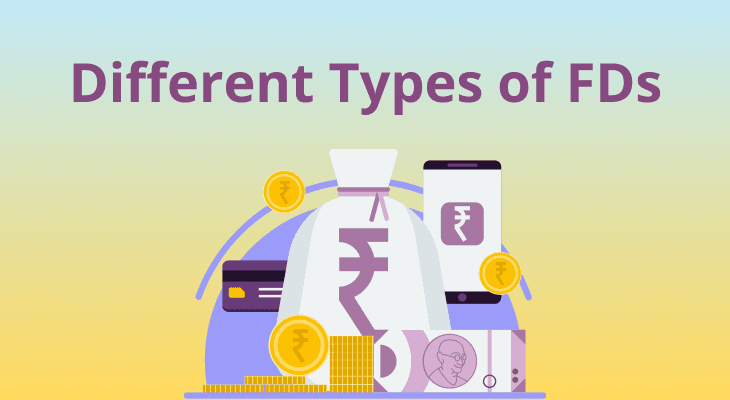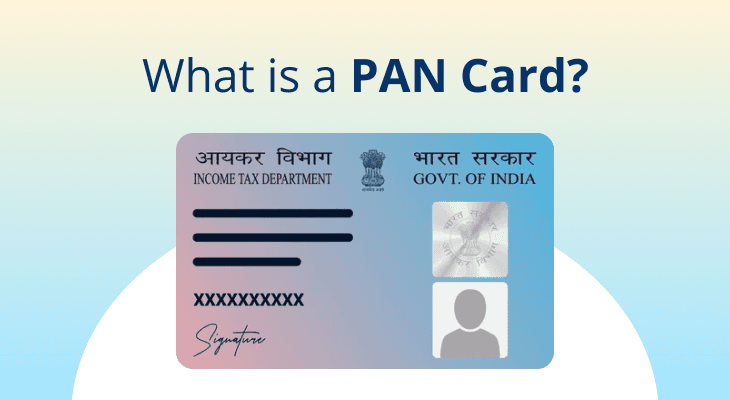
Which Are The Types Of Fixed Deposits You Can Invest In?
Introduction To Fixed Deposits (FDs)
When it comes to traditional investments, FDs often top the list. Whether it is saving for your child’s marriage or securing your own retirement, these financial products can help meet a wide range of goals. But did you know that just as there are different goals, there are also different types of FDs? This article will explore the various types of fixed deposit accounts available in India, and how you can choose the right one for your needs.
Types Of Fixed Deposit Accounts
Here are some common types of FDs available in India:
- Regular or standard FD: This is the most basic type of FD offered by banks, Non-Banking Financial Companies (NBFCs), and post offices. It locks your money for a fixed tenure in return for a fixed interest rate.
- Cumulative FD: In this FD, the interest is reinvested and paid out only at maturity, thereby allowing you to build a larger corpus through compounding. Such FDs are suitable for long-term wealth building.
- Non-cumulative FD: These FDs offer regular interest payouts during the FD tenure. You can choose your payout frequency – monthly, quarterly, half-yearly, or yearly. Since the interest is paid periodically, the maturity amount is lower compared to cumulative FDs. They are suitable for retirees or those seeking a steady flow of income.
- Tax-saving FD: While FD tenures can typically range from 7 days to 10 years, only FDs with a 5-year lock-in period qualify for a tax deduction under Section 80C of the Income Tax Act, 1961. Thus, such FDs are known as tax-saving FDs. They allow you to reduce your taxable income by up to ₹1.5 lakh annually.
- Callable FDs: FDs lock your money for a fixed period. However, callable FDs allow you to withdraw your funds prematurely, subject to certain conditions and penalties. The minimum amount for a fixed deposit in this case is typically as low as ₹1,000. They are suitable for regular investors who want the safety of FDs but also prioritize liquidity.
- Non-callable FDs: Non-callable FDs do not allow withdrawals before maturity, except in certain circumstances. In return for locking your funds, banks and NBFCs usually offer a higher interest rate than callable FDs. The minimum deposit requirement is ₹1 crore, making them suitable for large investors.
- Senior citizen FDs: These FDs are exclusive to senior citizens, i.e., individuals above the age of 60. They usually come with higher interest rates and additional benefits such as free doorstep banking services.
- Flexi FDs: Flexi FDs combine the features of savings accounts and FDs. When you link your savings account to such an FD and set a threshold balance, any surplus above the limit is automatically transferred to the FD. Hence, you can enjoy both the liquidity of savings accounts and the higher interest rates of FDs.
- Corporate FDs: These are offered by NBFCs and corporates. The interest rates are usually higher than bank FDs. However, they carry a comparatively higher risk of default.
Also Read: Non-Callable Deposit vs Callable Fixed Deposit
How To Choose The Right FD?
Before choosing an FD, consider the following factors:
- Goals: For long-term goals such as buying a house, cumulative FDs can be a good option due to compounding benefits. To save tax, you can opt for a 5-year tax-saving FD. For regular income, non-cumulative FDs are better, while for liquidity, callable FDs are more suitable.
- Age and demographics: Banks offer special FDs tailored for senior citizens. They typically come with higher interest rates and favourable terms. Some banks also offer special FDs for women and children.
- Tenure: FD tenures usually range from 7 days to 10 years, with longer tenures generally offering a higher interest rate. Choose a suitable tenure to avoid penalties and maximise returns.
- Interest rates: FD rates vary across entities and FD types. Compare carefully before investing. To estimate your maturity amount in different scenarios, you can even use online tools such as an FD calculator.
- Premature withdrawal: Understand these terms and conditions well so that you know what to expect when you break your FD pre-term, especially when it is for emergencies.
- Minimum investment: The minimum amount for fixed deposit accounts varies across entities and even FD types. Choose the one that best suits your financial situation.
- Convenience: Compare features such as user-friendly apps, 24/7 customer support, ease of banking, and even check customer reviews to ensure you get a comfortable banking experience.
Conclusion
Despite the evolution of new investment options, FDs remain a trusted choice for many. There is a wide range of FDs in India, each designed to cater to different categories of investors. Assess your goals, investment horizon, and liquidity needs carefully before making a choice to make the most of your investment.
FAQ
How is interest calculated on FDs?
Banks may use either simple interest or compound interest to calculate FD returns. However, in most cases, compound interest is applied, where interest is earned on both the principal and the accumulated interest. Simple interest, which is calculated only on the principal amount, applies only in limited cases, such as very short-term FDs.
Are FDs safe investments?
FDs are popular among households for their safety. The returns are guaranteed – you receive your principal back along with promised interest at maturity. Bank FDs are comparatively safer as deposits up to ₹5 lakh per bank per depositor are insured by the Deposit Insurance and Credit Guarantee Corporation (DICGC).
Can I take a loan against my FD?
Yes. Most banks and NBFCs allow you to take a loan against your FD. The loan amount is usually between 75% and 90% of the deposit amount. This ensures you meet your needs without breaking your FD prematurely.
What is a flexi FD?
A flexi FD offers the best of both worlds by linking your savings account with an FD. Once your savings account balance crosses a set threshold, the surplus is automatically transferred to an FD. Thus, you can enjoy the liquidity of a savings account along with the higher returns of an FD.
What is the tax treatment of FD interest?
The interest earned on FDs is fully taxable. It is added to your income and taxed at your applicable slab rate.
- Banks deduct a 10% Tax Deducted at Source (TDS) if your annual FD interest income exceeds ₹50,000 (₹1 lakh for senior citizens).
- No TDS will be deducted if your total income is below the taxable limit, provided you submit Form 15G/15H.
How many types of fixed deposit accounts are available in India?
There are several types of fixed deposit accounts in India. The most popular ones include:
- Regular or standard FDs
- Tax-saving FDs
- Senior citizen FDs
- Cumulative and non-cumulative FDs


